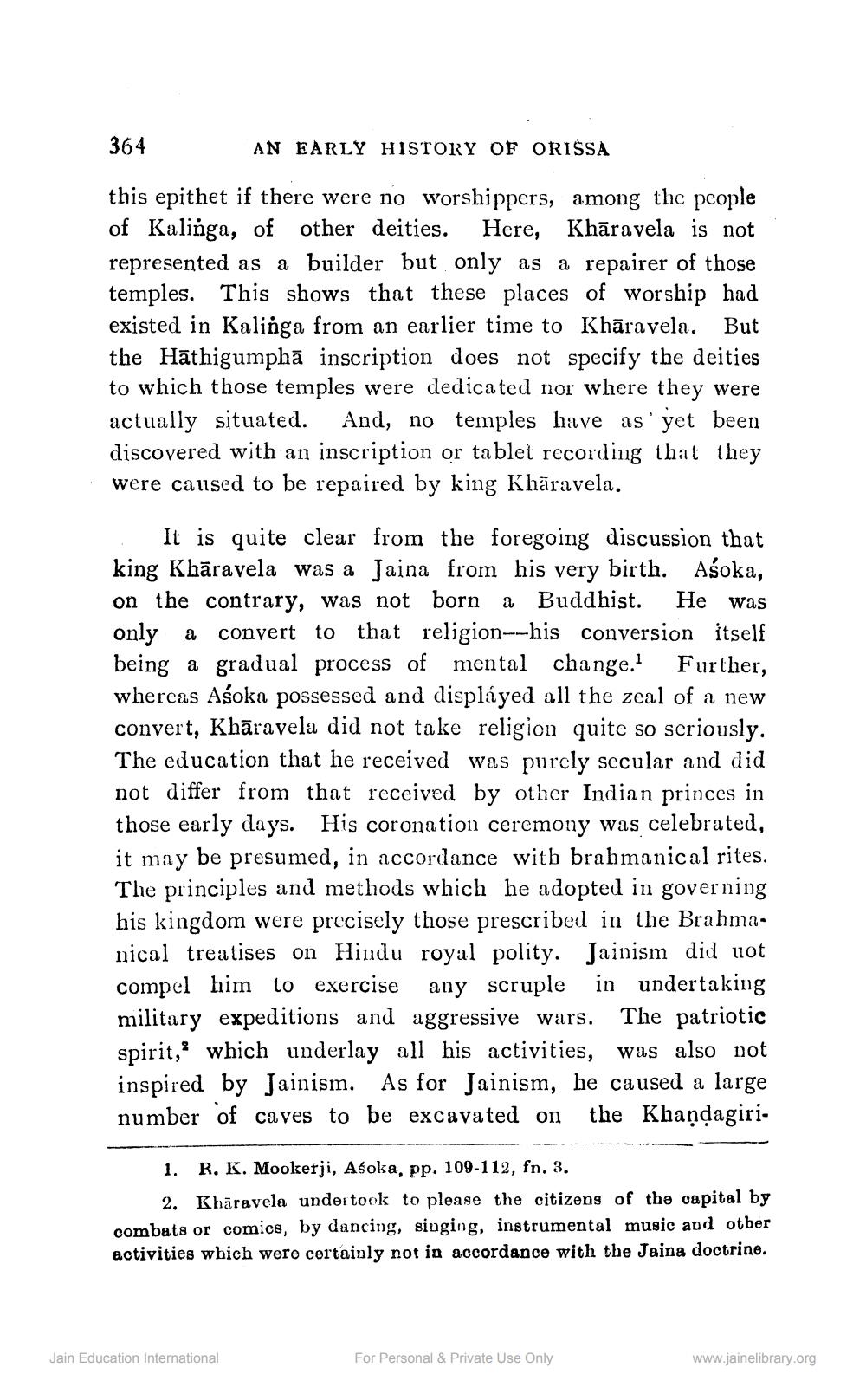________________
364
AN EARLY HISTORY OF ORISSA
this epithet if there were no worshippers, among the people of Kalinga, of other deities. Here, Khāravela is not represented as a builder but only as a repairer of those temples. This shows that these places of Worship had existed in Kalinga from an earlier time to Khāravela. But the Hāthigumphā inscription does not specify the deities to which those temples were dedicated nor where they were actually situated. And, no temples have as yet been discovered with an inscription or tablet recording that they were caused to be repaired by king Khāravela.
It is quite clear from the foregoing discussion that king Khāravela was a Jaina from his very birth. Asoka, on the contrary, was not born a Buddhist. He was only a convert to that religion--his conversion itself being a gradual process of mental change. Further, whereas Asoka possessed and displayed all the zeal of a new convert, Khāravela did not take religion quite so seriously. The education that he received was purely secular and did not differ from that received by other Indian princes in those early days. His coronation ceremony was celebrated, it may be presumed, in accordance with brahmanical rites. The principles and methods which he adopted in governing his kingdom were precisely those prescribed in the Brahmanical treatises on Hindu royal polity. Jainism did not compel him to exercise any scruple in undertaking military expeditions and aggressive wars. The patriotic spirit,” which underlay all his activities, was also not inspired by Jainism. As for Jainism, he caused a large number of caves to be excavated on the Khaņdagiri
1. R. K. Mookerji, Asoka, pp. 109-112, fn. 3.
2. Khāravela under took to please the citizens of the capital by combats or comics, by dancing, singing, instrumental music and other activities which were certainly not ia accordance with the Jaina doctrine.
Jain Education International
For Personal & Private Use Only
www.jainelibrary.org




